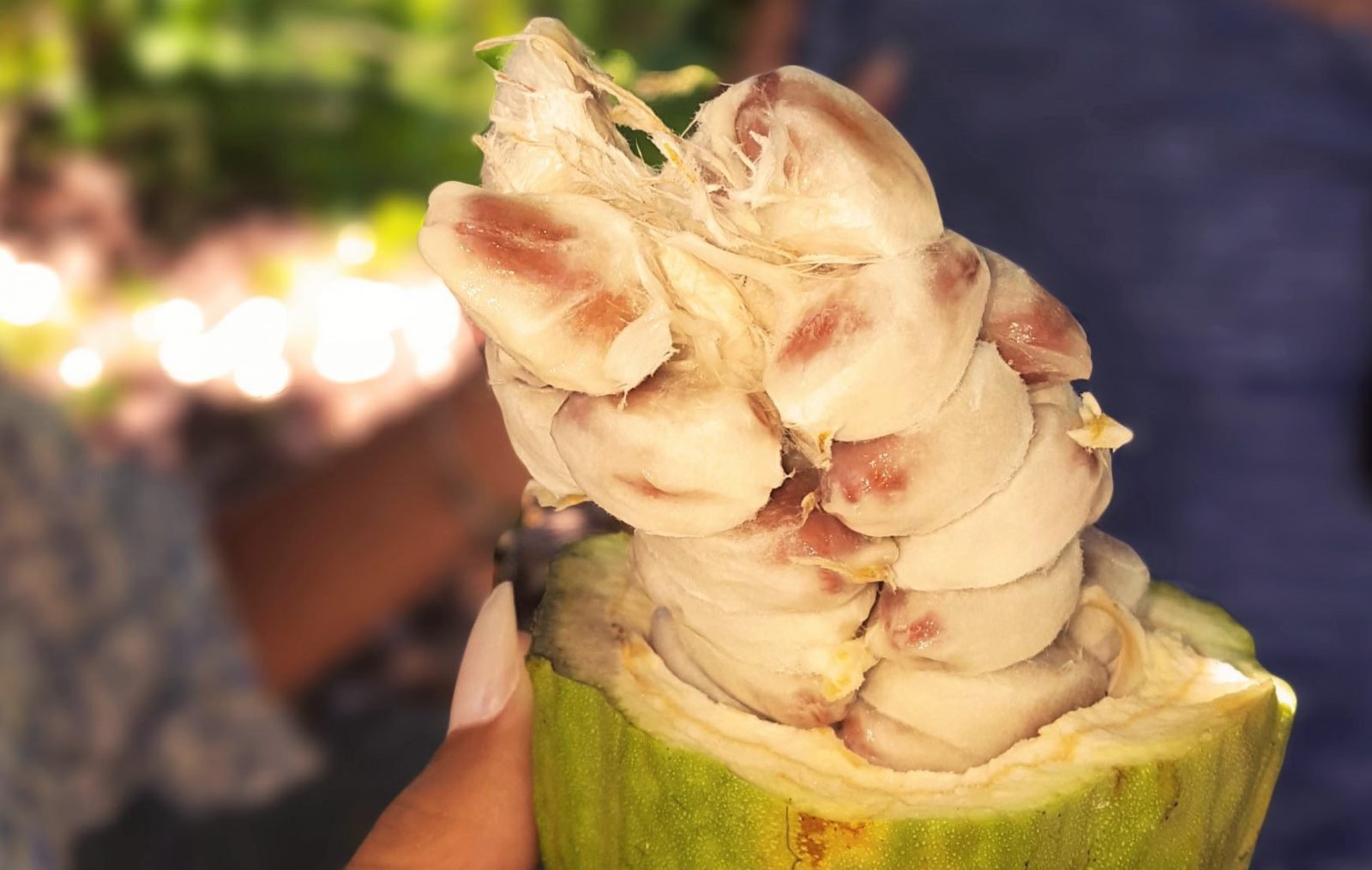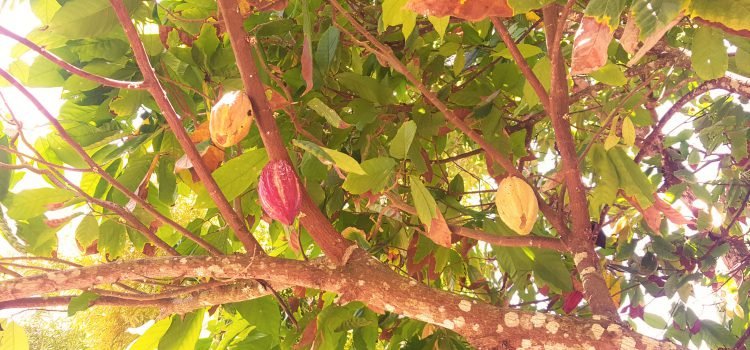Cocoa, a tropical plant from America, whose fruit receives the same name has become an essential food for all people due to its aroma and flavor.
Its fruit is usually used to make chocolate, since cocoa powder and butter are obtained from it, both when mixed with sugar give rise to different types of chocolate.
Read on, to learn more about this important topic.
Aspects to be treated:
- What are the origins of cocoa?
- When does Cocoa appear on the island of Cuba?
- Interesting facts about Cocoa:
Culture
Tree and Fruit
- How is Chocolate processed?
- What types of Chocolate exist?
- Is there a place on the island dedicated only to the sowing of cocoa?
What are the origins of cocoa?

According to historians, the appearance of Cocoa dates back to times as old as 800-1100 years before Christ, a product of evidence found in artistic manifestations such as sculptures, murals, bowls and vessels.
A sample of his presence was the finding of his hieroglyph in many containers, deciphered as ka-ka-wa in the form of fish.
The oldest was found in a Mayan burial in Guatemala in 1984, it is known as Río Azul vessel and dates back to 500 AD. C. s.
They have been the object of imagination in various Aztec paintings, where they were represented as tributes to the emperor and offerings to the dead.
When does Cocoa appear on the island of Cuba?
Already by 1492 with the arrival of the conquerors on Cuban shores, the inhabitants knew and dominated the cultivation of cocoa.
They even offered their deities their fruit and drank chocolate in rituals performed to name children, at weddings or funerals.
Extending the novelty to other regions of the world, chocolate became one of the delicacies of preference for figures such as María Teresa, wife of Luis XIV.
Over time, cocoa spread to the city of Baracoa, today the chocolate queen on the island due to its favorable climatic conditions and soil richness.
It is currently the producer of 75 percent of national cocoa.
It has a chocolate and powder chocolate factory, which has undergone several modernizations since its foundation in 1963.
Interesting facts about Cocoa:
- Culture:
Cocoa began to be grown in small plots, until the mid-twentieth century that began to promote some species of bitter taste and low quality.
But in 1956 the situation began to change.
Research began to begin to improve plantations with the introduction of clones and hybrids from Costa Rica.
Already by 1959 with the triumph of the Revolution these works accelerated and new technologies began to appear for the benefit of cocoa crops.
One of them was the creation of several banks with a high genetic level that made plants and producers of a superior quality fruit more resistant.
- Tree and Fruit:

The strange-looking tree that yields cocoa, is called Theobroma cacao, which in Greek means cocoa food of the gods, more than 200 years ago by the great botanist Carolus Linnaeus.
These trees grow only in the regions located in a strip of more or less 20 degrees around the line of Ecuador.
Violet red pods when tender and yellow when ripe, contain cocoa beans that grow directly on the tree trunk.
When opening the pods we find between 30 and 40 seeds, similar to almonds, covered with a pale yellow flesh, citrus flavor.

They contain among its components sugar, water and tannin, which is processed to obtain wines, vinegar and alcohols.
Another curiosity about the seeds of the fruit of the cocoa is that from its cover feed is manufactured and from the clean almond cocoa fat and other components are extracted.
However, from the shell of the fruits, organic matter is manufactured that improves soil conditions.
The plant that originates by means of seeds is of erect growth and can reach a height of five meters, the one born by stake is of open foliage and of smaller size.
How is Chocolate processed?
The process of making chocolate begins once the growers have collected the fruits of the cocoa, and open them by hitting with a machete to remove the beans.
The fruits are cut at their optimum moment of maturity, which is noted by the color and sound of the fruit when struck.
This harvesting process is essential for obtaining good quality grain.
Then the fresh grains are left to ferment in drawers at room temperature between 2 and 8 days.

In order to obtain grains in optimal conditions of flavor and aroma.
To do this, the grains are piled up and covered with banana leaves.
In the process the elimination of the mucilage that covers the almonds and the death of the embryo that is inside them occurs.
Once fermented, raw cocoa still contains 60% moisture, which should be reduced to 7%.
To do this, the beans spread on the ground exposing them to the sun.

This process will take a week although it can reach two or more depending on the ambient temperature of the place.
Once dried and cleaned, they are packed in jute or paper bags of about sixty kilos and stored under certain conditions of temperature and humidity.
After this process, the cocoa beans are sent to the chocolate manufacturers where they will finish the production process.
When the seeds arrive at their destination, they are roasted to help develop all their aromatic and flavor qualities.
The roasting is done at about 120-170 ° C and can last up to an hour depending on the size of the pimples or if they have been deprived of the skin.
Roasted cocoa beans are split and passed through steel rollers several times to remove the peel and be thin enough.
The pressure and friction produce a smooth but thick liquid mixture called cocoa liquor that will serve, either to make chocolate, or to make cocoa powder.
This paste is stored in the form of semi-solid cakes.
From here, cocoa paste can take several paths depending on its use.
To obtain the cocoa butter, the cocoa liquor is passed through a filter where the cocoa particles that are later used to make cocoa powder are retained.
This process helps eliminate acidity and bitterness typical of cocoa.
In the case of chocolate, unfiltered liquor is used.
In the kneader the ingredients are mixed and kneaded: cocoa paste, cocoa butter, sugar.
After this a homogeneous paste is obtained, prepared to pass again through the mill.

Which takes place in the refiner, where the size of all solid particles, especially cocoa and sugar, is reduced to about 25 microns.
Subsequently, in machines called shells, between 1,000 and 6,000 kg of chocolate dough are normally heated at a temperature of 80 ° C.
In this phase caramelization reactions occur.
For a period that oscillates between one and three days, the chocolate dough is refined in the shells, at a temperature between 50 ° C and 60 ° C.
To obtain adequate crystallization of cocoa butter, tempering is performed.
It consists in reducing the temperature of the chocolate by guaranteeing the crystallization of a minimum amount of butter in crystals of the stable type, while the crystals of the unstable type are ready to be molded.
Then it is reheated without exceeding 35 ° C.
At this time the chocolate is about to be molded.
In the molding process, the liquid mass of cocoa is poured into molds
And once the process is finished the final products are taken to the packaging machines and wrapped in aluminum foil.
Subsequently, individual packaging is carried out and the products are put in boxes and pallets.
What types of Chocolate exist?
- Dark chocolate.
- Chocolate with nuts or cereals
- Chocolate with fruits
- Milk chocolate.
- White chocolate.
- Liquid chocolate.
Is there a place on the island dedicated only to the sowing of cocoa?
Yes, one of them is the Cocoa Trail.

It is accessed from the country restaurant Finca Duaba, belonging to the Gaviota S.A. Tourism Group. in Villa Gaviota Baracoa.
It is the first cocoa trail in America. It has the cocoa house and other proposals to quench the thirst of people interested in the important and delicious product that is part of the local culture.











Do you sell cocoa butter I am chocolate maker in Jamaica and a friend is coming to Havana this month March. Do you sell cocoa butter in Havana. Thanks
Hola Anjahli,
Mmmmhhh, please allow us to do a research about it and I will let you know 🙂